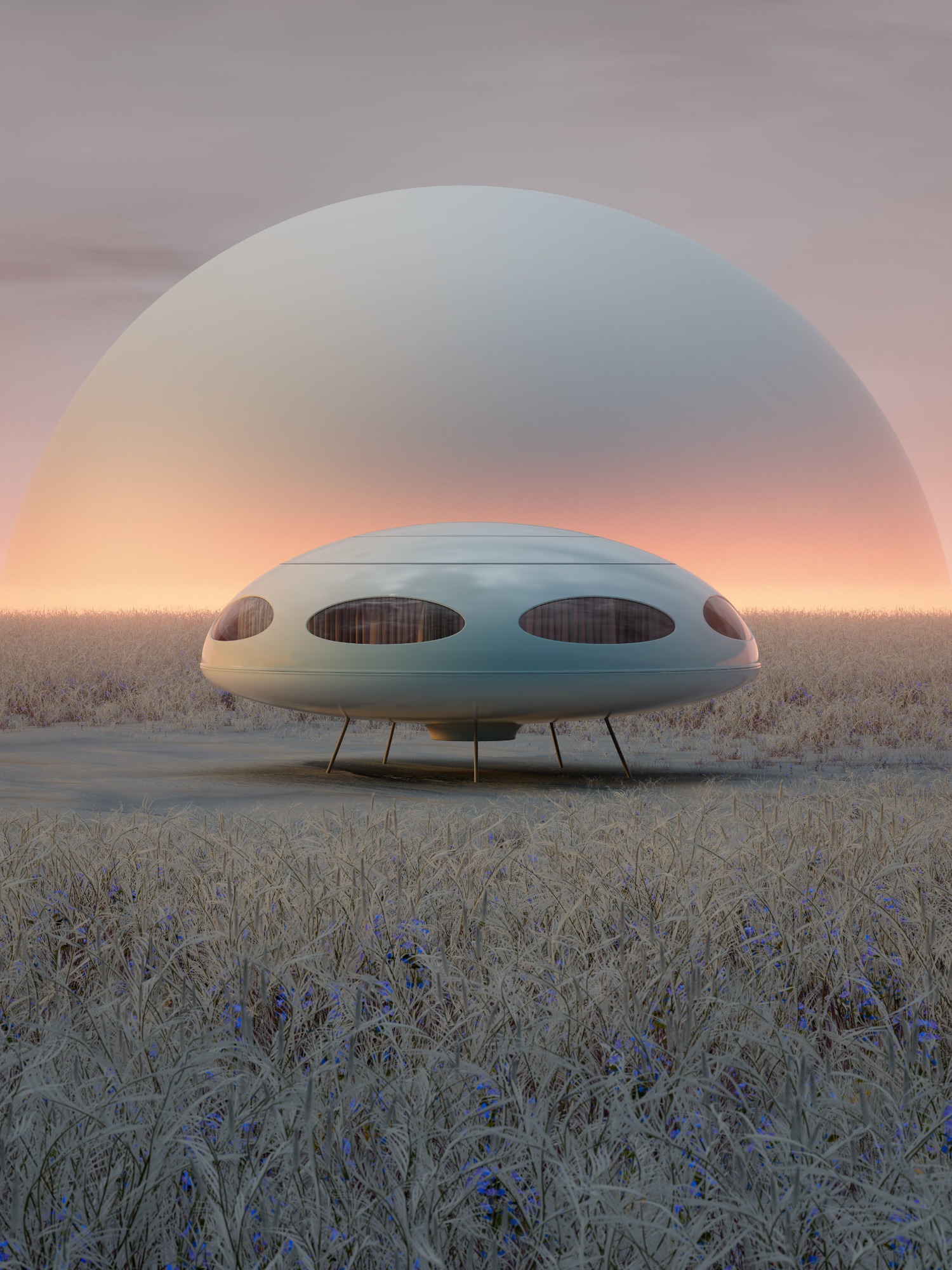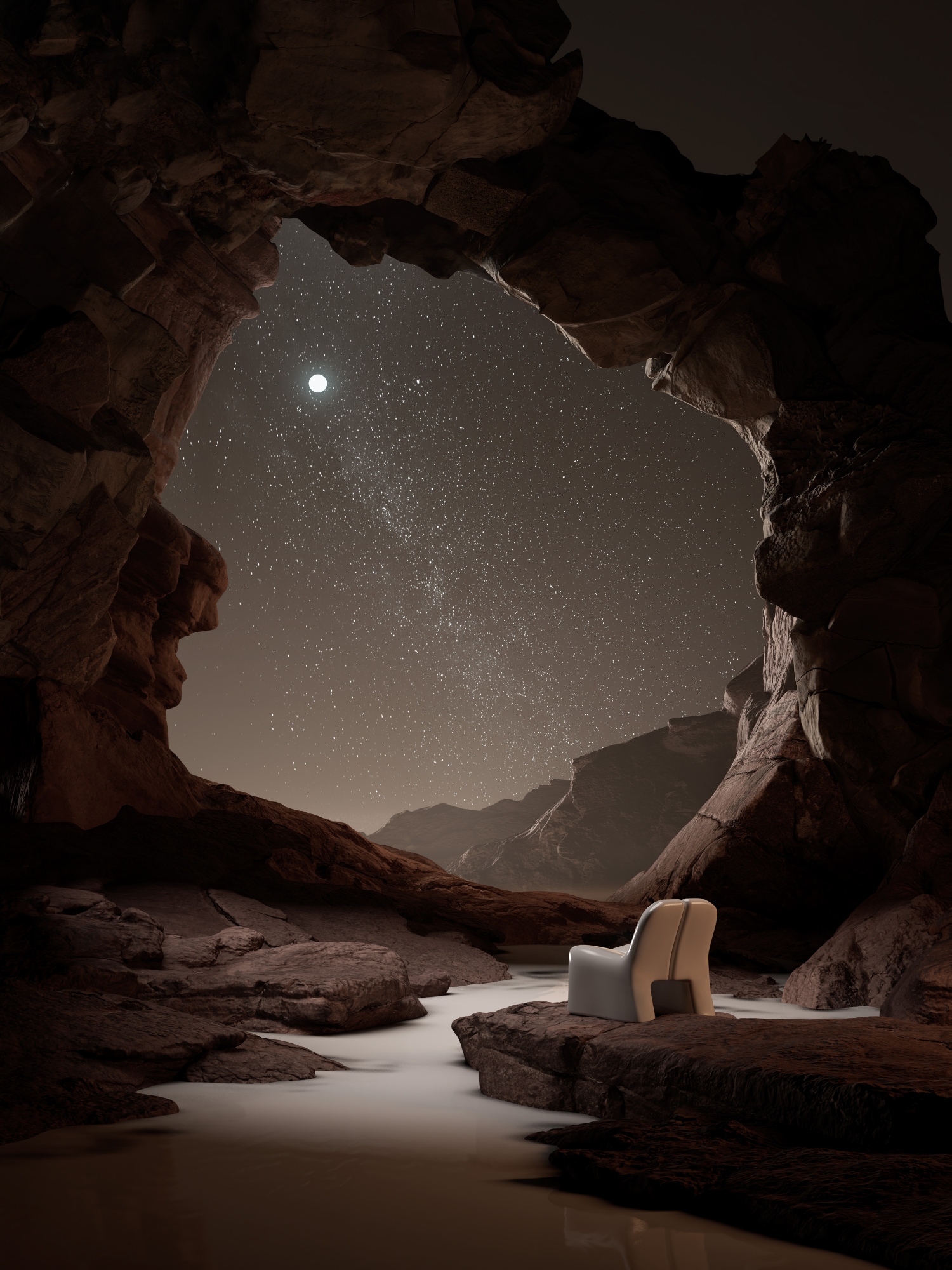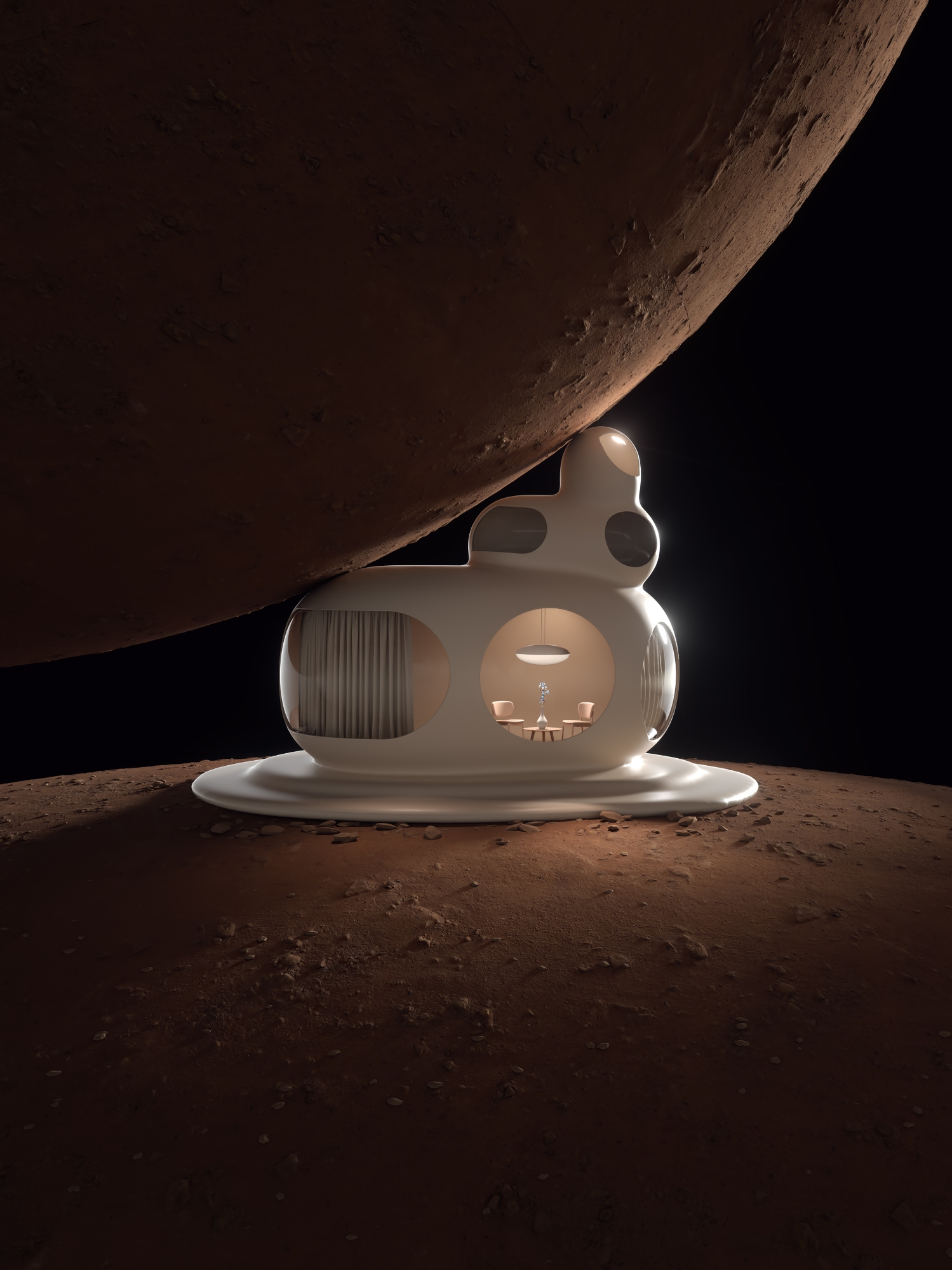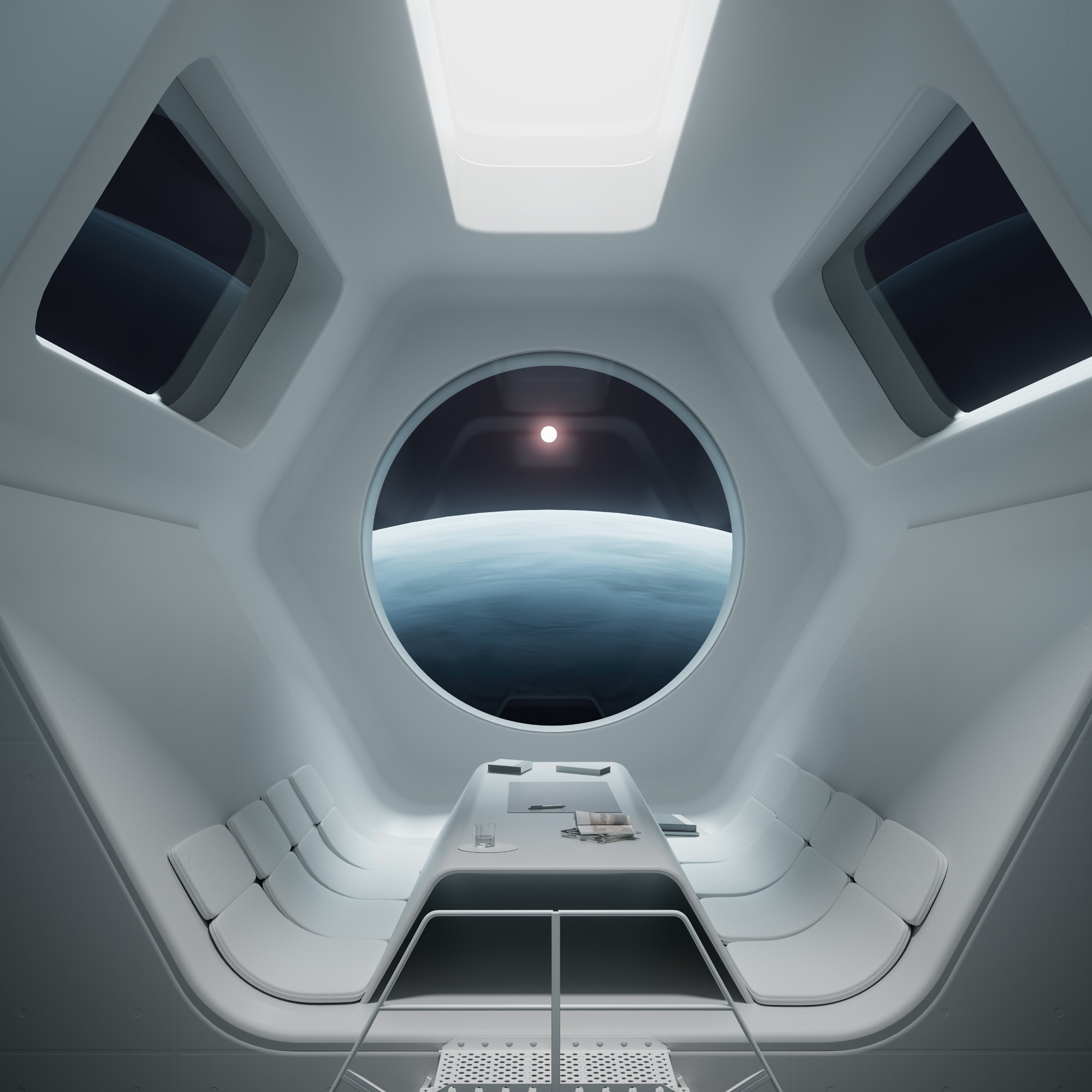Geleitet von der Motivation, Räume und Situationen zu kreieren, die unserer Vorstellungskraft neue Türen öffnet, erschafft das in Barcelona ansässige Designstudio Six N. Five seit 2014 Bilder und Filme mit poetisch surrealer Ästhetik. Mit der Serie »What If« haben sie sich auf eine imaginäre Reise ins All begeben und dort die Wahrnehmung von Zeit, Einsamkeit und Erwartungen erforscht. Wir sprachen mit dem Creative Director Ezequiel Pini über die aktuelle Serie, die unendlichen Möglichkeiten der digitalen Kunst und über die Herausforderung persönliche künstlerische Visionen mit den Anforderungen kommerzieller Projekte zu vereinen.
Chapter How were you introduced to the world of Digital Art and Computer Generated Imagery (CGI) ?
Ezequiel Pini I became a graphic designer in Buenos Aires, growing up in the era of the digital boom when the computer provided us all the tools to project ideas in different languages. Over time I discovered CGI, having first used it just by chance in a job. I then began investigating and ultimately learning more and more about how to use this valuable tool. Today I consider CGI the most versatile and accurate way to portray my ideas.
Chapter »What If?« explores the perceptions of time, loneliness and expectations. What was your main inspiration behind the series?
Ezequiel Pini The main inspiration comes from the title itself, the curiosity to imagine spaces and situations that human reasoning is not able to interpret. At the same time, it has an attractive aesthetic that captures the viewer’s attention and makes reasoning stand aside. We were also eager to explore the visual language of everything related to space. I think it has been a combination of both.

Chapter You divided »What If?« into three Acts – »The Journey«, »The Settlements« and »The Encounter«. What can you tell us about that?
Ezequiel Pini Indeed. The first act is called »The Journey«, we could say it is more about how the place would be as we travel to this imaginary place. We designed these space houses that represent the hope to arrive, but also our mundane life attachments, carrying memories of a previous reality. The second act is a reflection from a far distance that allows us to imagine life in another physical condition. From an external viewpoint, we fantasize about the idea of how these space houses would look. The last act is more about feelings and the experience of already living there.


Chapter Digital Design offers you a universe of seemingly endless possibilities. How do you approach new, personal projects like »What If?«?
Ezequiel Pini I like to take advantage of being able to depict our ideas regardless of the physical world’s limits. I believe this is the primary purpose of our work, through a concept or idea, to be able to portray something that looks real but as we interpret, we realize it is not.
Chapter Your creations let people have a peek into another world. What emotions do you intend to trigger with your work?
Ezequiel Pini We like to create images that can produce something for the viewer. A feeling, a smile, even discomfort or pleasure. It is not only portraying a space or idea literally because for me the image has to have something more to it. It is not easy, but sometimes we accomplish it and it feels pretty good when it happens.


Chapter Do you work exclusively on your computer or do you also sometimes use pen and paper?
Ezequiel Pini Most of our work is on the computer. From the moment I sketch a simple idea, I go straight to my digital tablet. Or even to a 3D software to quickly create simple geometric shapes as a placeholder, and by moving the camera in the program, this helps us to have a general idea of how this piece could be. Definitely, the computer has become our pen and paper and thus, I have become 100 percent digital.
Chapter What’s the secret behind combining personal, artistic visions with a client’s demand for commercial projects?
Ezequiel Pini I believe this is the basis from the start of Six N. Five. It is quite a difficult task, but eventually I managed to do it with a lot of hard work and discipline. Commercial projects have conditions and need to meet expectations. Therefore by being commissioned by a client there will always be someone ensuring that these conditions and expectations are met. This undoubtedly limits the time that we have to create, but we actually work as if we have no limits, whether in personal or artistic work. We force ourselves, with every commissioned work, to also take one to two months to execute our pending ideas and exploration projects. Without precise limits and enjoying the process itself.
Chapter Six N. Five specializes in still life visuals and videos. Could you imagine taking your practice one step further and translating your projects into a VR experience?
Ezequiel Pini Definitely! Although I believe VR is still in the early stages of becoming more popular, we have already launched a VR experience this year for our project »The Revolt«. It is a short film of a two-level house that you can explore in the first person and interact with the characters with spectacular results. But I think there is still a long way to go. [MS]




